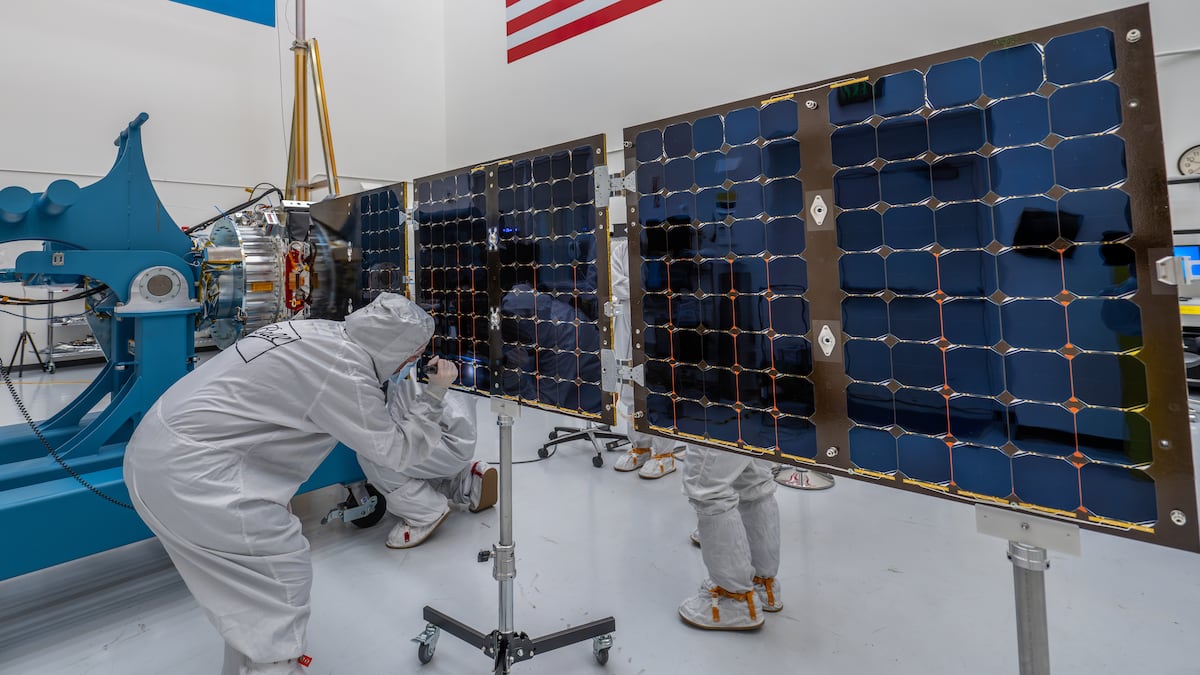The fight against methane – responsible for around 25% of the global warming recorded on the planet since the pre-industrial era – has been at the center of the international climate agenda in recent years. And starting this week it has an ally that will be decisive: MethaneSat, the first satellite put into orbit without commercial purposes designed specifically to detect methane leaks. The project has been developed by the American NGO Environmental Defense Fund (EDF, its acronym in English), which six years ago managed to close an alliance between activists and scientists to launch it. An investment of around $88 million has been required, which EDF has raised from the New Zealand Government and various foundations, such as the Bezos Earth Fund. The satellite was launched Monday night and is expected to be operational this summer.
“When we think about climate change, our mind goes to carbon dioxide,” explains scientist Daniel Zavala. “But there are other gases such as methane that in the first decades after being emitted are much more powerful in their warming effect. We want to make this invisible problem visible,” emphasizes Zavala, who leads EDF's methane science team.
The fact that this gas is invisible to the human eye contributes to large leaks (intentional or accidental) linked to the extraction of oil, gas and coal going unnoticed and unpunished. The MethaneSat project wants to fight against this, which “will map 80% of global oil and gas production,” details Zavala. The data of the 25 planetary regions where the main deposits that will be controlled daily are located will be offered openly, anyone will be able to consult them. But, in addition, this project will also contribute to feeding the alert network for major leaks born under the umbrella of the UN environmental protection program.
The so-called International Methane Emissions Observatory (IMEO) was created in 2021 and currently has a large leak warning system that also uses data from satellites from public space agencies, but which were not specifically designed to control this gas as is the case with MethaneSat. . “It is very exciting that an NGO is launching, for the first time in the world, a satellite designed to control methane in the oil and gas sector,” says Manfredi Caltagirone, director of IMEO, who highlights the key contribution that this project will make to the observatory that leads and the alert network. Caltagirone adds: “Transparency is changing the rules of the game in this battle to control methane emissions.”
Launch on Monday of the SpaceX company's Transporter-10 in which the MethaneSat satellite was traveling. /SpaceX
Physicist Luis Guanter, who leads a group of researchers from the Polytechnic University of Valencia (UPV) that has specialized in the identification of large methane leaks and who also collaborates with EDF, explains that at the moment there are other satellites with capacity to detect the trace of megaleaks. But there is no non-profit organization that has been specifically designed for this gas and that will also offer the data openly. Furthermore, another of the characteristics that make it unique is that it is capable of detecting both “punctual and diffuse leaks.”
Information is the first tool against climate change. Subscribe to it.
Subscribe
Specific leaks are those large leaks that normally occur in oil and gas exploitation and that leave a trail in the form of a plume that can be detected through satellites. Diffuse discharges are numerous, but smaller, discharges, such as those generated by rice fields, landfills and livestock farms, says Guanter. The new satellite can analyze grids of 40,000 square kilometers in search of these diffuse leaks.
Although the main purpose of MethaneSat is the control of oil and gas infrastructure, it will also have a leg dedicated to monitoring emissions generated by agriculture, livestock raising and rice production. This area of research will be led by a group of New Zealand scientists, who highlight that this is the “first satellite” capable of “quantifying diffuse agricultural emissions, due to its high precision and spatial resolution.” A study from the International Energy Agency (IEA) estimated a few years ago that 40% of global methane emissions come from natural sources, mainly wetlands. The remaining 60% is linked to human activities: almost 25% corresponds to agriculture and livestock, another 21% is due to fossil fuels and another almost 12% to waste.
However, when you go down to detail, the issuers are not exactly known. In the energy sector, for example, Zavala explains that it is known that “about 100 million tons of methane are emitted per year.” “But we don't know clearly who is responsible,” adds this expert. Thanks to this new satellite, it will be possible to trace the methane footprint, for example, of the fuels imported by the European Union, a traceability that the community institutions are interested in knowing in order to take measures. “When you know where emissions occur, you know where to act,” says Zavala.
Caltagirone emphasizes that one of the keys to the fight against climate change is data. “It is necessary that there be direct, credible and transparent information so that companies, governments, NGOs, the media can act…”, adds the director of IMEO.
One of the most important projects that this observatory has underway is the large leak warning network, which will benefit from the new satellite. Itziar Irakulis-Loitxate, a researcher also at the UPV and one of the collaborators of this alert network, explains that this is “the first system in the world to detect large emissions and alert governments and companies.” At the moment, it is focused on oil and gas exploitation, but soon coal fields will be incorporated, which are also a major source of leaks. Since January 2023, they have notified 187 emissions to governments and companies.
You can follow Climate and Environment in Facebook and xor sign up here to receive our weekly newsletter
Subscribe to continue reading
Read without limits
_
#39Big #Brother39 #monitor #methane #leaks #oil #industry #orbiting #Earth

Leave a Reply